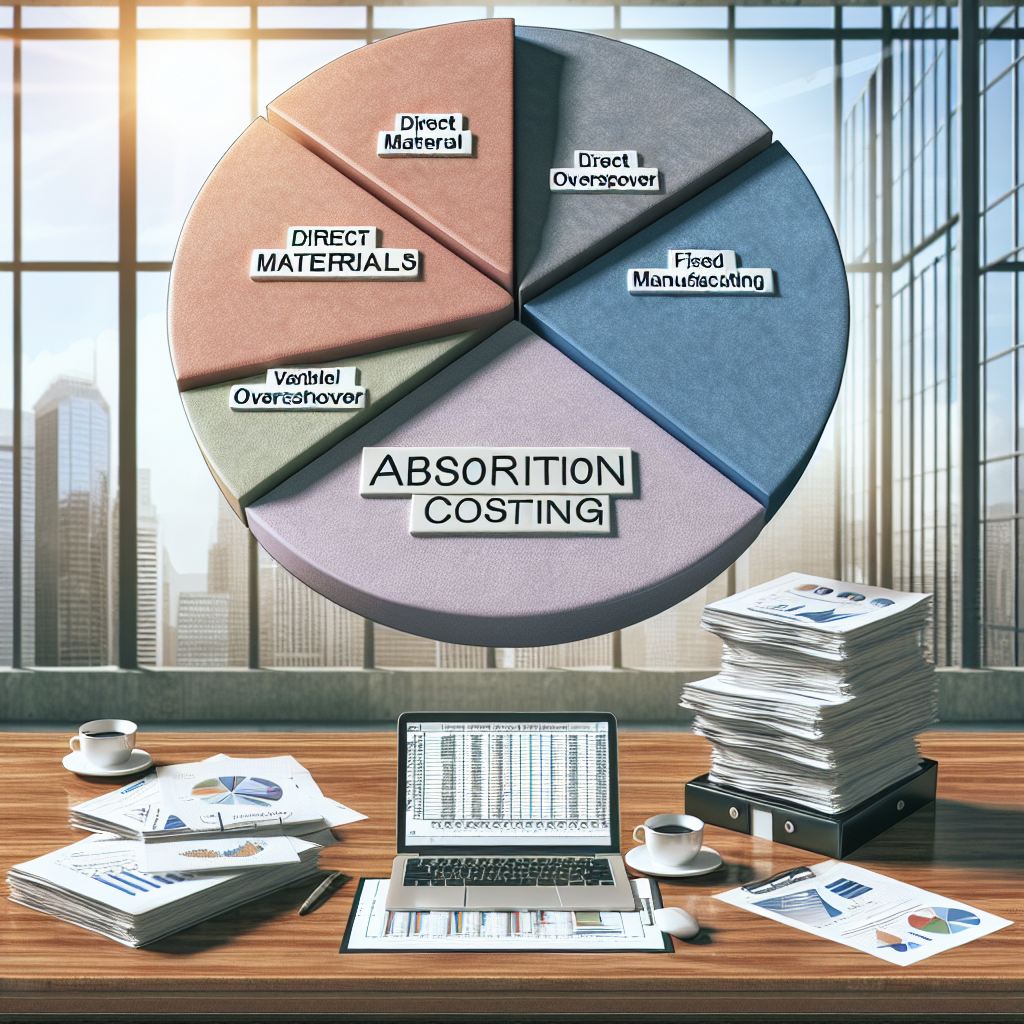Understanding Absorption Costing: A Comprehensive Guide
When it comes to understanding how a business manages its costs, absorption costing is a crucial concept to grasp. This accounting method plays a vital role in how companies evaluate their production costs and profitability. In this blog post, we will demystify absorption costing, break it down into simple terms, and discuss its importance in financial reporting.
What is Absorption Costing?
Absorption costing is an accounting method that captures all costs associated with manufacturing a particular product. These costs include both fixed and variable expenses. In simple terms, absorption costing ensures that every cost involved in producing a product is “absorbed” into the cost of that product.
The Components of Absorption Costing
Absorption costing consists of several key components:
-
Direct Materials: These are the raw materials that are directly used in the manufacturing of goods.
-
Direct Labor: This refers to the work hours spent by employees who are directly involved in production.
-
Variable Manufacturing Overhead: These are costs that vary with production levels, such as electricity and supplies used in the production process.
-
Fixed Manufacturing Overhead: This includes costs that do not change with production levels, such as rent for the factory or salaries of staff not directly involved in production.
The total cost of producing a product under absorption costing will include all of these components, providing a comprehensive view of its total manufacturing cost.
How Absorption Costing Works
Under absorption costing, the total cost of a product is calculated by adding all the above components. For instance, if a company produces 1,000 units of a product with the following costs:
- Direct Materials: $5,000
- Direct Labor: $3,000
- Variable Manufacturing Overhead: $2,000
- Fixed Manufacturing Overhead: $10,000
The total cost of production would be:
- Total Cost = Direct Materials + Direct Labor + Variable Manufacturing Overhead + Fixed Manufacturing Overhead
- Total Cost = $5,000 + $3,000 + $2,000 + $10,000 = $20,000
To get the cost per unit, simply divide the total cost by the number of units produced:
- Cost per Unit = Total Cost / Number of Units Produced
- Cost per Unit = $20,000 / 1,000 = $20
So, under absorption costing, each unit costs $20 to produce.
Benefits of Absorption Costing
-
Full Cost Recovery: By accounting for all manufacturing costs, absorption costing allows businesses to recover the total cost of production through product pricing. This can lead to more accurate pricing strategies.
-
Better Profitability Analysis: This method gives companies insights into their profitability by understanding how fixed and variable costs affect overall costs. It helps managers see where efficiencies can be improved.
-
Inventory Valuation: Absorption costing affects inventory valuation on balance sheets. Products kept in inventory are valued at a higher level compared to variable costing because they include fixed manufacturing overhead.
-
Financial Reporting: It is required by generally accepted accounting principles (GAAP) for external financial reporting, making it necessary for companies preparing standardized financial statements.
Limitations of Absorption Costing
While absorption costing has its benefits, there are also some drawbacks:
-
Potential for Misleading Profits: Absorption costing can sometimes lead to misleading profitability analysis, especially when production levels vary significantly. For instance, if a company produces more than it sells, the fixed costs are spread over more units, which can inflate the profit margins.
-
Complexity in Decision Making: Since absorption costing includes fixed costs, it can complicate management decisions regarding pricing and production. Managers may find it challenging to understand the true cost behavior of their products.
-
Inventory Overproduction: Some companies might be tempted to produce more products than they can sell to spread the fixed costs across a larger number of units, leading to excess inventory that could tie up cash.
Absorption Costing vs. Variable Costing
It’s essential to understand how absorption costing differs from variable costing, another common accounting method.
-
Variable Costing: Under variable costing, only variable costs (direct materials, direct labor, and variable manufacturing overhead) are included as product costs. Fixed manufacturing overhead is treated as a period expense and charged to the income statement in the period incurred.
-
Absorption Costing: As previously noted, absorption costing includes both variable and fixed manufacturing costs in product costs.
This difference can lead to vastly different profit figures, especially in periods of fluctuating production and sales volumes. It’s crucial for businesses to choose the method that best fits their reporting and management needs.
Conclusion
Absorption costing is a fundamental accounting method that helps businesses determine the total cost of their products by factoring in both fixed and variable costs. It is beneficial for cost recovery, inventory valuation, and financial reporting but comes with challenges such as potentially misleading profit analysis.
Understanding absorption costing can help business owners and managers make informed decisions that drive profitability and support effective financial reporting. If you want to learn more about accounting methods and their impacts, consider exploring resources from Stock Pulsar.
By having a grasp of absorption costing, businesses can better evaluate their production expenses and develop effective pricing strategies. It’s an essential aspect of financial literacy that every business owner should understand.



